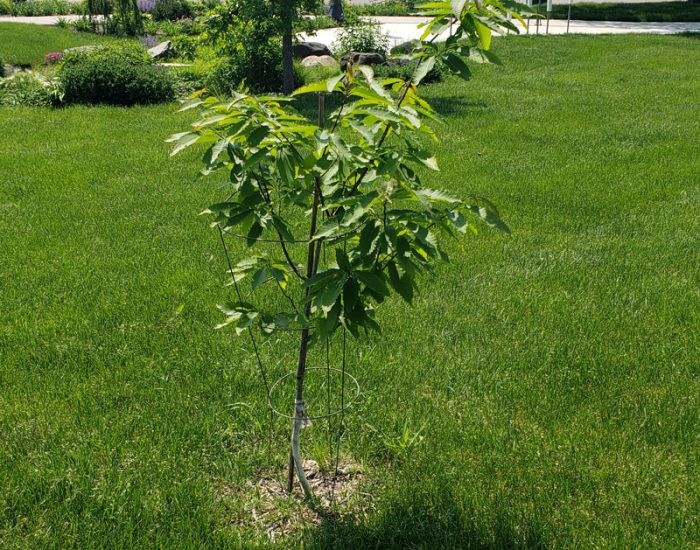American Chestnut
Castanea dentata
Over a hundred years ago, American Chestnuts were so common that it was said that a squirrel could jump from tree to tree all the way from Georgia to Maine. This commonly quoted statement may be hyperbole, but it sure does paint a picture. The American Chestnut tree was synonymous with our American forests. Mature trees grew to 100 feet and their trunks could reach 5 or more feet in diameter!
Cryphonectria parasitica is the cause of Chestnut Blight. In the early 1900s this fungal disease hitchhiked to North America in the trunks of Asian Chestnuts, which were resistant because they had evolved with the blight. Within 50-years of its arrival, the Chestnut blight had rendered the American Chestnut all but extinct. The roots are still viable and produce shoots, but the tree no longer reaches maturity in its native range. This means you could still potentially see an American Chestnut in the forest, but it will not live to old age.
There was a time when an estimated ¼ of the trees in the forest (this survey was conducted in Pennsylvania) were American Chestnut. Mature trees could produce 10 bushels of nuts or more! For deer, bears, game birds, squirrels, and raccoons this was a major food source. The nuts were more reliable than oaks as the flowers avoided frost damage by blooming in June. The trees grew faster than oak, matured sooner, and the nuts had higher carbohydrates although they are equal to acorns in protein content. The void left by the decimation of the American chestnuts in eastern forests was simply unable to be filled by other trees such as hickory and oak due to their sheer numbers and the quality of the food they provided. Five species of insects are recorded to have become extinct as a direct result of the functional extinction of the American Chestnut. More insect species populations suffered tremendous losses. This is to say, the consequences for wildlife were simply catastrophic.
The American Chestnut looks beautiful in full bloom with its creamy white catkins on full display at the end of each growing tip. Chestnuts are released in the fall from a spiky husk that is framed by green leaves that are noteworthy for their sharp teeth.
Complete information on this species can be found at the source link below:
Information Source: https://kb.jniplants.com/american-chestnut-castanea-dentata
Plant Source: Johnson’s Nursery
Core Characteristics
Type: Shade
Origin: Eastern North America
Mature Height: 40-60 Feet
Mature Spread: 35-55 Feet
